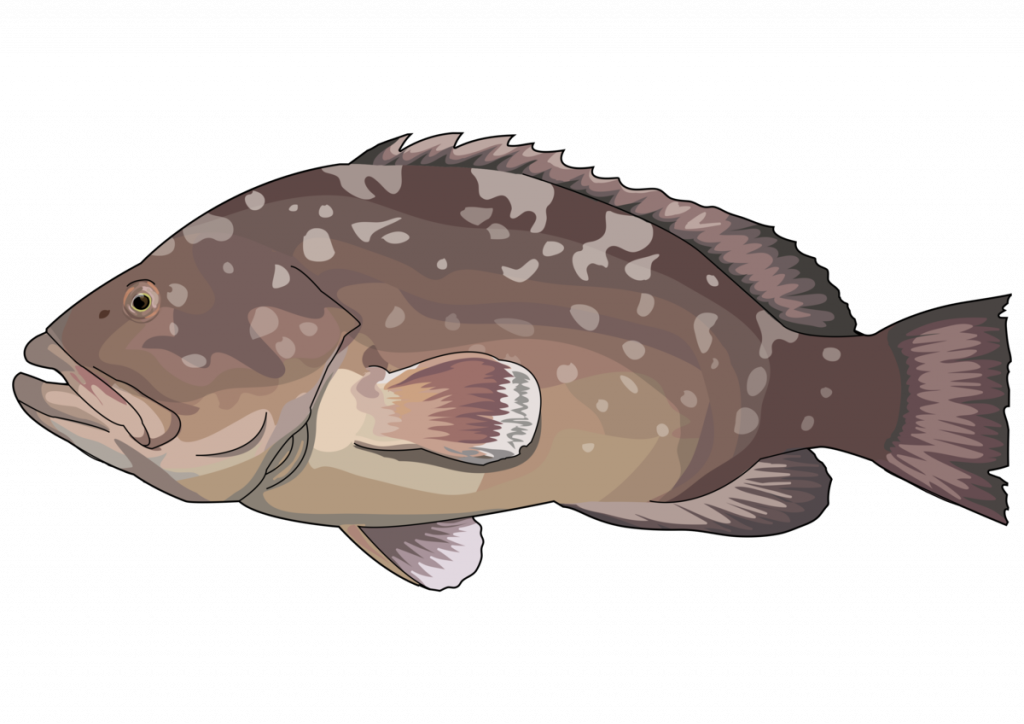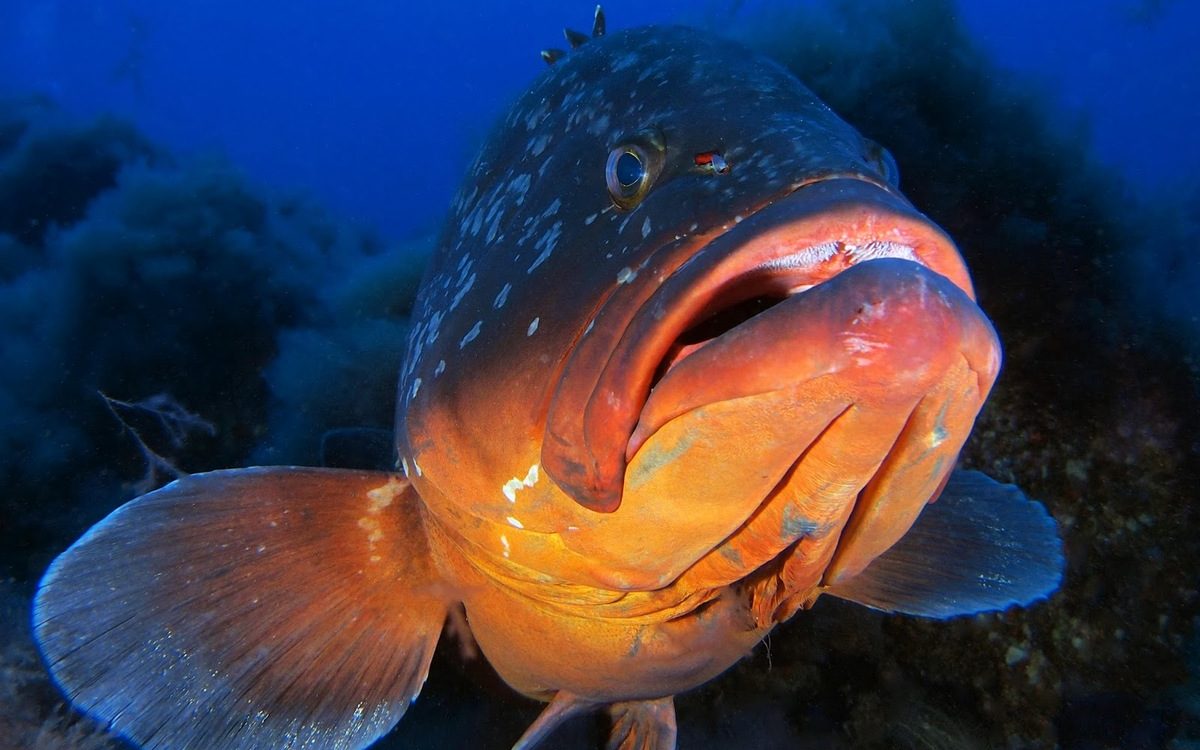The grouper is a robust fish, with large mouth and prominent lips that finds in the Canary waters one of its main areas of distribution. This species is not endemic to the Canary Islands, but it is considered, like many others living in the archipelago, a species under threat and is therefore protected. In this article we will talk about the grouper fish and its particularities.
Description and characteristics of grouper fish
The grouper (Epinephelus marginatus) is a bony fish of the family Serranidae. It was first discovered by Lowe in 1834. It is a robust-bodied fish that can measure between 70 and 90 cm on average, but can reach up to 1.5 m (4 to 6 ft). In terms of weight, the grouper fish can weigh about 60 kg, but can even exceed this figure and reach a maximum weight of 70 kg.
One of the most striking characteristics of the grouper fish is its large mouth, its bulging lips and its lower jaw slightly protruding from the upper jaw, which gives it a very characteristic appearance.

The coloration is predominantly brown, with spots of different colors (white, yellow, green or silver gray) and the belly becomes golden and yellowish, although these colors may change depending on the reproductive or even emotional state in which the animal is. When they are young, they stand out for having a bluish green color. The dorsal fin is long with an orange rim, the caudal fin is convex with a white border and the tail is rounded with a white rim.
The grouper is characterized by a life span of around 50 years. It is a species highly valued for the flavor of its meat, which has led it to be the object of massive underwater fishing and hence it is currently protected, although its meat continues to be consumed in a controlled manner.
Grouper distribution in the world
The grouper fish can be found in the Mediterranean, the Azores, the Canary Archipelago, southern Brazil and Uruguay, northern Argentina, Mozambique and Madagascar. It can be observed from 10 m depth, generally at 50 m, although to avoid fishermen, the number of specimens in shallow waters has decreased in favor of deeper waters, up to a maximum of 200 m. Younger groupers tend to live at shallower depths and closer to shore than mature specimens.

Grouper fish habitat, diet and feeding
The grouper is a fish that usually lives in isolation and is very territorial. It lives near the coast, preferably in rocky areas and underwater caves. It also inhabits areas of oceanic posidonia meadows or aquatic plants.
Their diet is based on mollusks, such as octopus, crustaceans and small fish. They usually hunt at dusk or dawn and remain inactive during the day.
Reproduction of this fish
The grouper fish is a successive hermaphrodite, born female and at sexual maturity, at about 12 years of age, it develops male sexual organs. Mating takes place in summer, when a large male can be observed surrounded by several smaller females, since it is the females that go to the male's territory and wait for him there and not the other way around, as is the case with the vast majority of animals.
Pancho grouper from El Hierro, the most famous grouper fish
In the Mar de las Calmas Marine Reserve, on the island of El Hierro, lived Pancho, the most famous grouper of all times. He could be seen in the area known as El Desierto, delighting diving enthusiasts. First, his girlfriend, Natalia, disappeared, hunted by a poacher. Five years later, in 2010, Pancho also disappeared. It is not yet known what or who could have killed him, but he is believed to be dead since he has not been seen in the area.

Pancho's story
The marine world can be as fascinating as it is unpredictable, and sometimes the most moving stories come from the ocean's own inhabitants. As we mentioned earlier, the story of Pancho, the most famous grouper fish in the Canary Islands, touched the whole community and lovers of marine life. His death, in 2011, left many divers in the area with great sorrow.
Pancho, a giant grouper fish weighing 90 kilos, became a local celebrity in the Canary Islands. He lived in the waters of La Restinga Marine Reserve, located in the Sea of Las Calmas, on the island of El Hierro.
But his large size was not the only thing that made him famous, but also his friendly character and his interaction with divers visiting the Reserve. This attracted a lot of attention, as groupers are very territorial and are not usually friendly with other animals. Divers often encountered him, especially near the cave where he lived.
The news of Pancho's death so moved the Canarian community, but especially the inhabitants of El Hierro, that for a long period of time they stopped eating grouper in restaurants for fear of cooking the beloved Pancho.
The Canary Islands is a land with a thousand things to see, explore and learn about. If you are interested in learning more interesting facts about the Canary Islands, here is a link to the Explora Canarias section of Marca Canaria.
Photo: Aqua Foundatione, Government of the Canary Islands, Check the Sea



